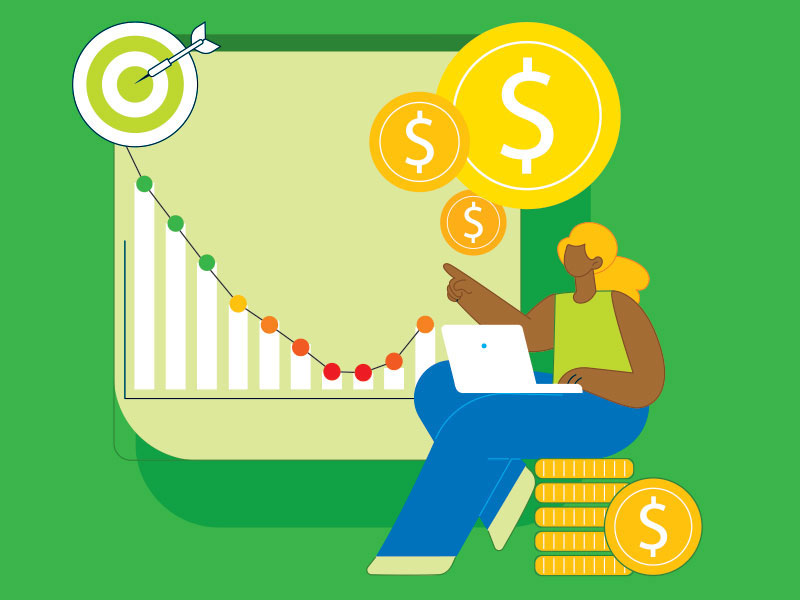
Canadian long-term bond ETFs, a disastrous investment during the steep run-up in interest rates that began in March 2022, partly redeemed themselves in 2023 with average returns exceeding 8%. Most of that return came in December amid growing optimism that the Bank of Canada and the U.S. Federal Reserve were done raising rates and would deliver long-awaited relief in 2024.
Because bond prices move in the opposite direction of interest rates, long-term bonds have the most to lose when market rates surge. That’s what happened in calendar 2022, when these ETFs sustained severe losses averaging 22.8%, according to Fundata Canada Inc.
No one is predicting a rebound of similar magnitude. But the market landscape appears more favourable for venturing further along the yield curve. In the influential U.S. market, futures prices indicate traders expect the Fed to begin cutting rates as early as March, and definitely by mid-year.
Last November, Mackenzie Investments became the most recent long-term bond entrant with its launch of the Mackenzie Canadian Government Long Bond Index ETF, along with a U.S. long-bond ETF.
“Given potential activity we may see from the Bank of Canada and the Fed, we anticipate there’s going to be increasing interest in long bonds going into 2024,” said Prerna Mathews, vice-president, ETF product strategy, with Mackenzie. “I think there is pretty broad sentiment that we’re going to see rate cuts. It’s just a matter of how much and how quick.”
With rates heading down sometime in 2024, financial advisors and their clients need to review existing fixed-income holdings. “Any rate cut means you need to start thinking about what you’re going to be yielding in the future in those ultra-short bond solutions,” Mathews said, “and what benefit from an appreciation and yield perspective you may achieve going further up the curve.”
Alfred Lee, portfolio manager and investment strategist with BMO Global Asset Management, views long-term bonds as playing a supporting role within a diversified fixed-income allocation.
Lee recommended what’s known as a barbell approach, obtaining exposure to both short-term and long-term bonds. But he favoured overweighting the short end of the yield curve.
Doing so enables investors to take advantage of the inverted yield curve, as shorter-term issues still generate higher yields. This is an anomaly compared with a normal curve in which longer maturities pay higher yields than shorter-term securities.
Moreover, once central banks begin reducing rates, Lee anticipates short-term securities will initially gain the most. And for investors who have considerable exposure to interest-sensitive stocks such as banks, pipelines and utilities, he added, it’s not a good idea from a diversification perspective to hold too much in long fixed-income holdings that also are vulnerable to rate hikes.
However, in some bear-market scenarios, long bonds would help offset equities market risk. For that reason, BMO GAM strategists favour modest exposure. In a typical 60/40 portfolio that holds 40% in bonds, Lee suggested a reasonable allocation to long-term bonds would be 3%–5% of total assets.
Within the Canadian long-term category, funds such as the BMO Long Federal Bond Index ETF and Mackenzie’s new ETF invest exclusively in government issues. Other pure duration plays, in that they take no corporate-credit risk, include the Invesco Long Term Government Bond Index ETF, the iShares Core Canadian 15+ Year Federal Bond Index ETF and the TD Canadian Long Term Federal Bond ETF.
Taking a more diversified approach to the Canadian market are the iShares Core Canadian Long Term Bond Index ETF and the Vanguard Canadian Long-Term Bond Index ETF, with holdings that are mostly government issues but include some corporate bonds.
Long-term bond ETFs that invest in corporates deliver higher yields while assuming higher credit risk. “Once you get into long corporates, you can start to see some very poor-quality issuances,” Mathews said. “There’s a reason they have to issue so far out.”
A pure corporate play is the BMO Long Corporate Bond Index ETF. It recently held nearly 60% in A-rated debt while almost all the rest was rated BBB, which is at the low end of investment-grade. This portfolio recently reported a yield to maturity of 4.8%, substantially higher than the 3.1% for the BMO Long Federal Bond Index ETF and its AAA portfolio.
A variation on the theme of long-bond ETFs are those investing in the U.S. market. Although these are closely correlated over the long haul with Canadian long-term bonds, divergence can occur over shorter periods.
This group includes the oldest entrant, the BMO Long-Term US Treasury Bond Index ETF; last year’s newcomers the iShares 20+ Year U.S. Treasury Bond Index ETF and the Mackenzie US Government Long Bond Index ETF; and the TD U.S. Long Term Treasury Bond ETF.
Lee said holding U.S. long bonds may be beneficial during a sharp selloff of the stock market or black swan event during which the U.S. dollar appreciates because of its reputation as a safe haven. With the BMO U.S. ETF, “you’re also getting that U.S.-dollar exposure, which is an added kicker in certain risk-off circumstances,” he said.
The performance outlier among long-bond ETFs is likely to be the Horizons Long-Term U.S. Treasury Premium Yield ETF, launched in October. This ETF employs call and put options, altering the portfolio’s risk profile while seeking to generate much higher income than the underlying holdings.
This article appears in the February issue of Investment Executive. Subscribe to the print edition, read the digital edition or read the articles online.